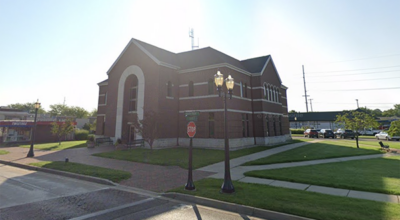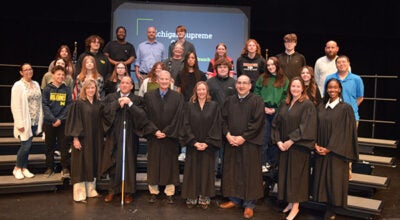Niles addresses bullying claims
Published 6:20 pm Friday, April 29, 2011

Howard Elementary students take part in an advanced reading lesson Friday morning. Parents have expressed concerns lately about bullying after a TV news report indicated Howard students were scared to go to school. Administrators explained the bullying was an isolated incident between two students.
Gov. Rick Snyder said this week he will push Michigan to join 45 other states in passing an anti-bullying bill into law.
“Bullying is a school issue,” he said. “It must be dealt with in school before it becomes a law enforcement issue.”
The message is one being heard loud and clear in Niles after a spotlight was put on Howard Elementary School earlier this week.
A report by ABC 57 claimed the school’s students were in fear due to incidents of bullying at the school and on the playground.
Supt. Richard Weigel and Howard Elementary Principal Michelle Asmus sat down with the Star on Friday to discuss their bullying policy and address any concerns of parents.
“We define bullying as an act that is targeted or repeated,” Asmus said.
In the last year or so, Asmus estimated dealing with “about a handful” of such incidents.
Clarifying the news report, Asmus said a particular incident occurred between two students who received consequences for their inappropriate behavior while on the playground. Following that, she said the issue continued away from school. She also said no threats were made on school property and the two had not had any problems at school prior.
“We had received no parent complaints on bullying all year long until just recently,” Asmus said.
“Those are surprising phone calls,” Weigel said. “And of course we take them very seriously and follow up accordingly.”
Each school in Niles Community Schools has its own official bullying policy. Still, Weigel said the state signing its own anti-bullying law, “elevates the awareness,” among districts, parents and the community.
At both Howard and Ballard schools, which teach the same grade levels, incidents reported to teachers and administrators are entered into a database “so we can pick up on patterns or targets,” Asmus said.
Behaviors are broken down into four levels: minor, moderate, more severe and most severe.
Some examples of behaviors in each category include name calling or rude gestures at the minor level, swearing, humiliating, shoving or hitting at the moderate level; fighting and punching at the more severe level; and physical violence resulting in medical attention and sexual or ethnic harassment at the most severe level.
When the incident occurs, Asmus said students are given consequences such as calls to a parent, in-school suspension, written apologies, detention or meeting with a behavior specialist.
The consequences increase should the behavior reoccur.
“Are there inappropriate behaviors? Yes,” Asmus said, adding that each of the more than 800 students going to Howard-Ellis Elementary School are at an age where they are being taught what appropriate behaviors are.
“We feel it’s our job to teach them right now how to interact with each other,” she said.
According to the school’s data, approximately 7 percent of Howard’s students have had between two and five referrals for behavior; 2 percent have received more than six; and close to 1.5 percent have received more than nine.
Asmus said she addressed the issues in question with the affected parents this week and had not received any complaints from other parents since the report aired.
At Ballard, Principal David Eichenberg said the school’s behavior specialist gave a special presentation to students about what constitutes bullying prior to spring break. Students also signed a pledge that promoted good behaviors.
“We do have kids who will say mean things to other kids or push and shove kids,” he said.
What he hasn’t seen is a victim who experiences those behaviors day in and day out.
Ballard also hold code of conduct meetings for incidents at severe or repeated levels in which the student, parents, a panel of three administrators and the school’s behavior specialist sit down to address the issue.
A national spotlight has also been put on the issue of bullying in schools as more and more incidents of “cyber bullying” and severe bullying have even ended with fatal results.
Which leaves schools like Howard and Ballard with the critical responsibility of addressing an age-old issue with a renewed focus.






